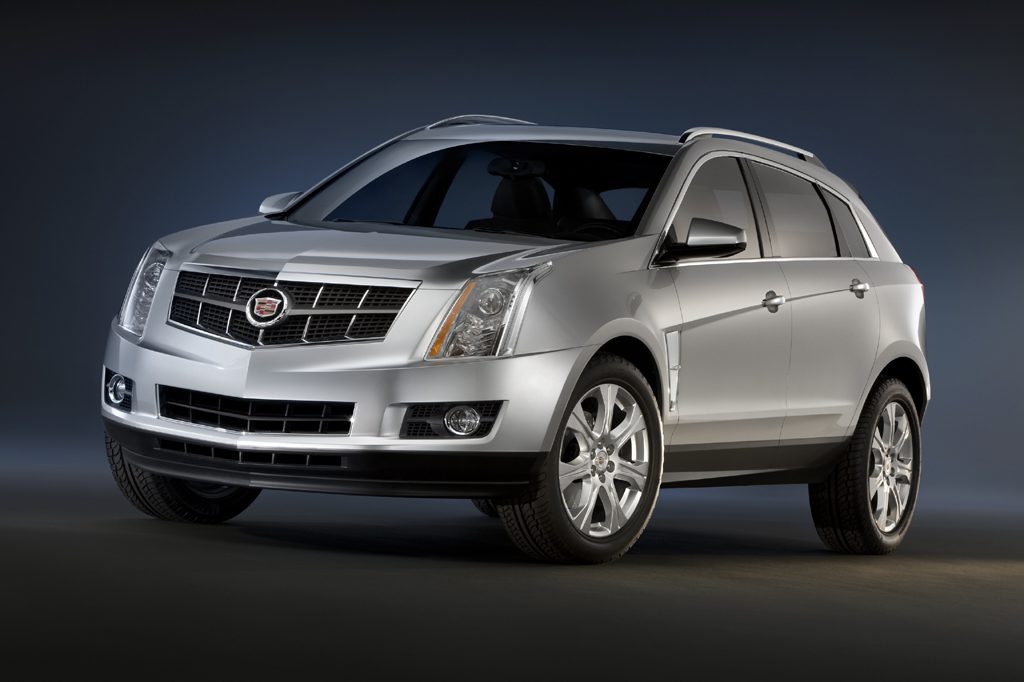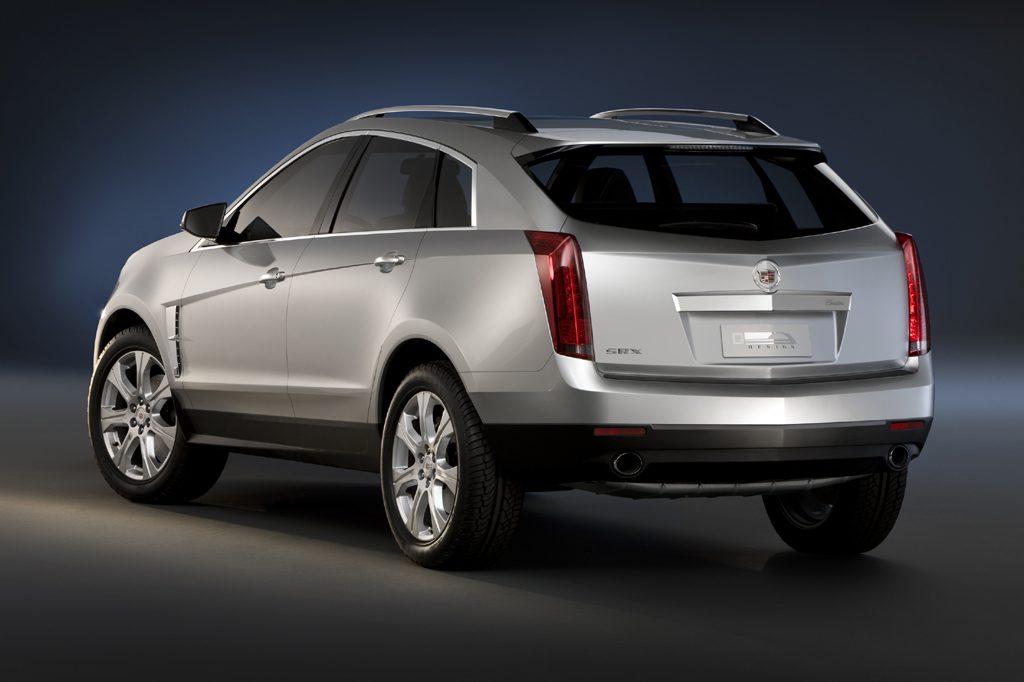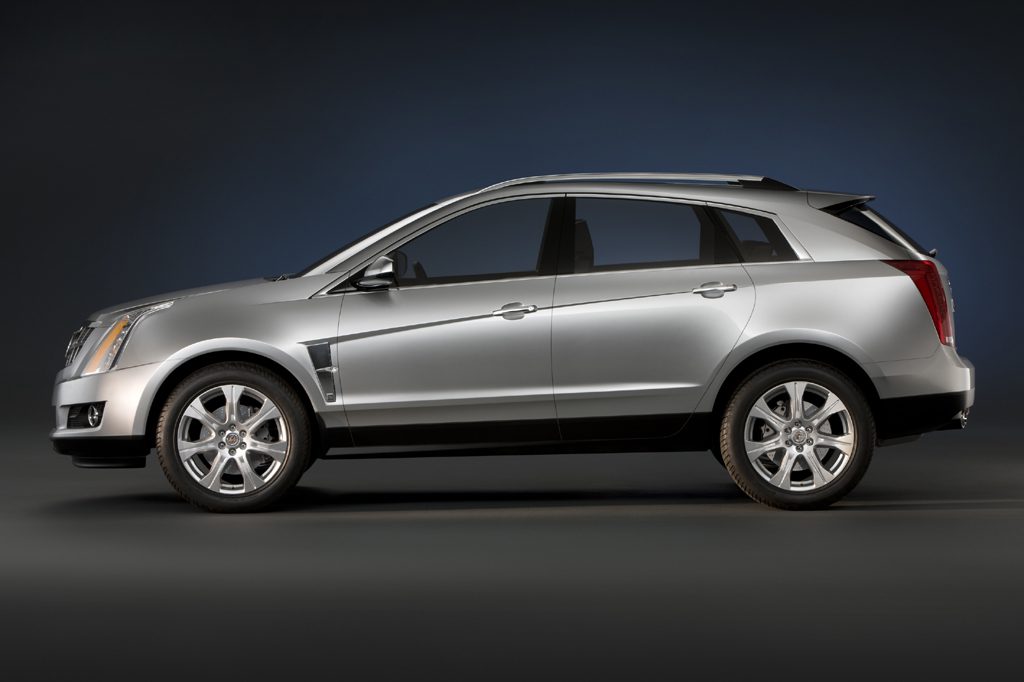| Premium midsize SUV; Built in Mexico |
|
|
| Good condition price range: $13,400 – $42,800* |

2010 Cadillac SRX front

2010 Cadillac SRX rear

2010 Cadillac SRX profile
| Pros: |
|
| Cons: |
|
With an aggressive look and rather firm suspension, the downsized SRX aims at the sportier side of the “sport-utility” equation. With the 3.0-liter engine, at least, SRX doesn’t quite fulfill its performance promise. We give Cadillac kudos for including the electronic sport suspension on all models equipped with the available 20-inch wheels, as it does a good job of smoothing out this SUV’s ride. A host of clever cargo-storage solutions, and a roomy, nicely appointed cabin, are among its greatest assets. A base SRX might undercut the Lexus RX on price, but loaded versions can cost significantly more, new or used.
Overview
A redesign for the 2010 model year gave Cadillac’s midsize SRX sport-utility vehicle freshened styling, smaller dimensions, and new engines. About 5 inches shorter in both wheelbase and overall length than its 2004-09 predecessor, the SRX seated five (it previously offered a third-row seat for up to seven-passenger capacity). The Base model had front-wheel drive, and a Luxury version was fitted with all-wheel drive. Each used a 265-horsepower 3.0-liter V6 that was capable of running on E85 ethanol-blended fuel. Topping the line was the AWD Turbo Performance model, with a 300-horsepower 2.8-liter turbocharged V6. Both engines teamed with a six-speed automatic transmission. Maximum towing capacity was 3,500 pounds. Standard safety features included antilock braking, traction control, an antiskid system, curtain-side airbags, and front-side airbags. A navigation system with a hard drive for storing digital music files, a rearview camera, and steering-linked headlights were standard on the Turbo Performance and available for Base and Luxury models. Tri-zone automatic climate control, heated/ventilated front seats, heated rear seats, and keyless access/engine start were optional on all models. SRX competitors included the Acura MDX, Lexus RX, and Mercedes-Benz M-Class.
Yearly Updates
| 2011 SRX The SRX lineup gained more trim levels following its 2010 redesign. Previously offered only as the Base, Luxury, and Turbo Performance, the 2011 SRX came as the 3.0, 3.0 Luxury, 3.0 Performance, 3.0 Premium, Turbo Performance, and Turbo Premium. |
| 2012 SRX A 308-horsepower 3.6-liter V6 became the standard and only engine for the 2012 Cadillac SRX, replacing both the 3.0-liter V6 and turbocharged 2.8-liter V6. |
| 2013 SRX After receiving a new engine for the 2012 model year, General Motors updated SRX in a number of other ways for 2013. The exterior styling saw a few tweaks, but the bigger news was inside, were this crossover got an almost completely new interior, highlighted by a revised dashboard and control stack. |
| 2014 SRX One of the few changes to the 2014 SRX was the availability of self-dimming headlights. |
